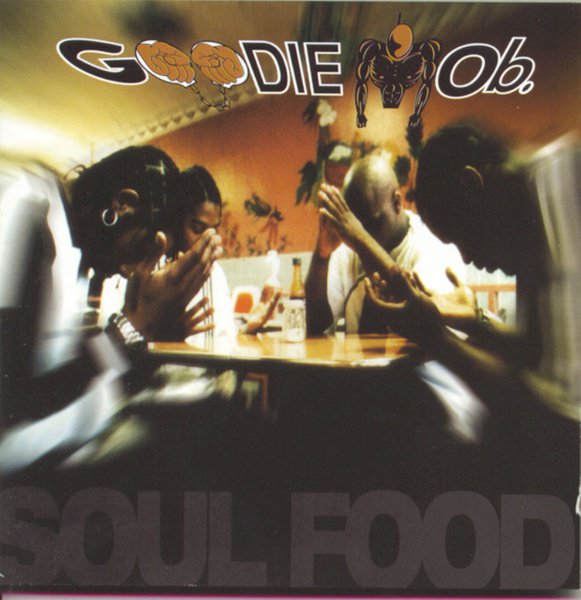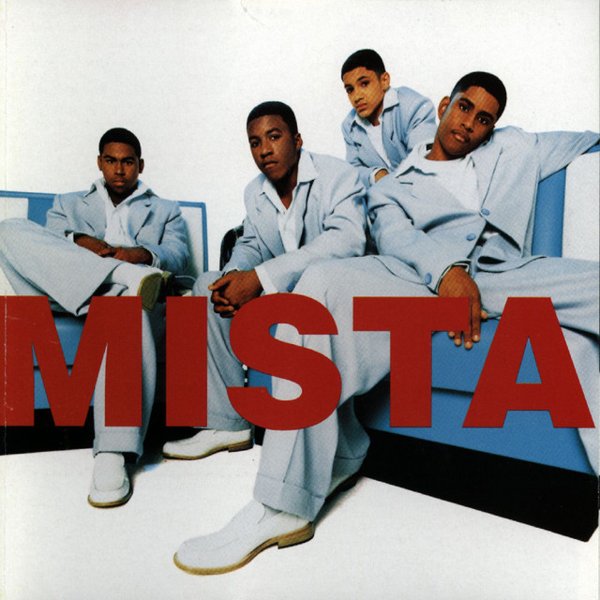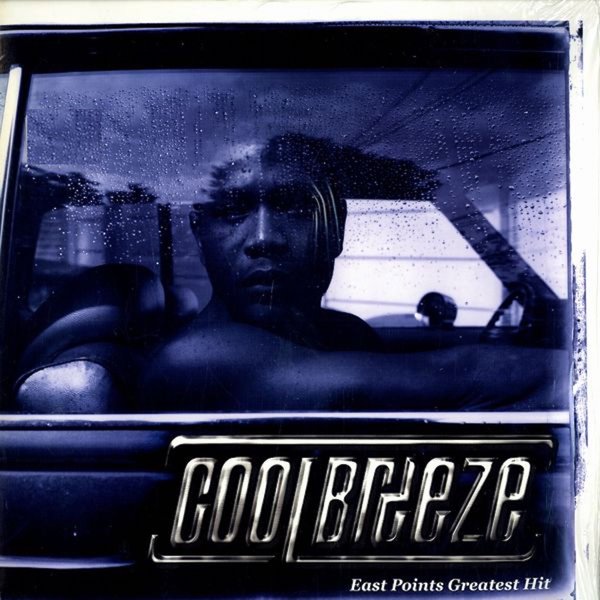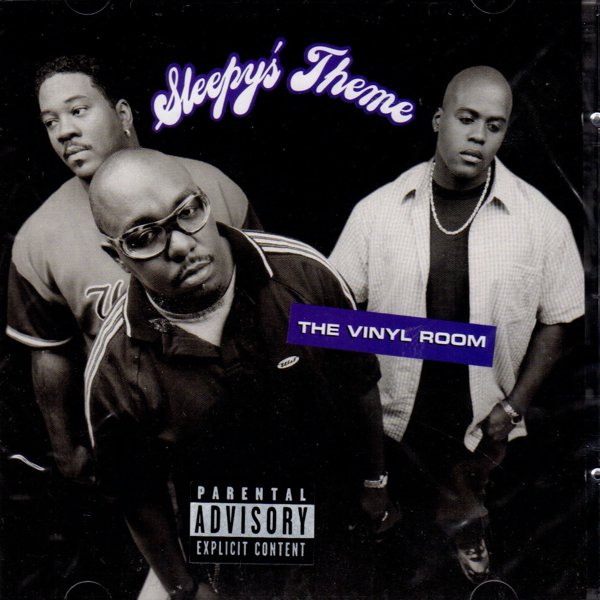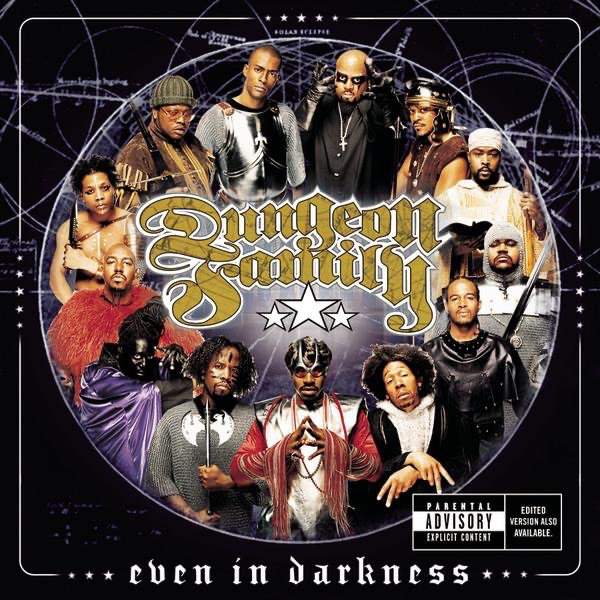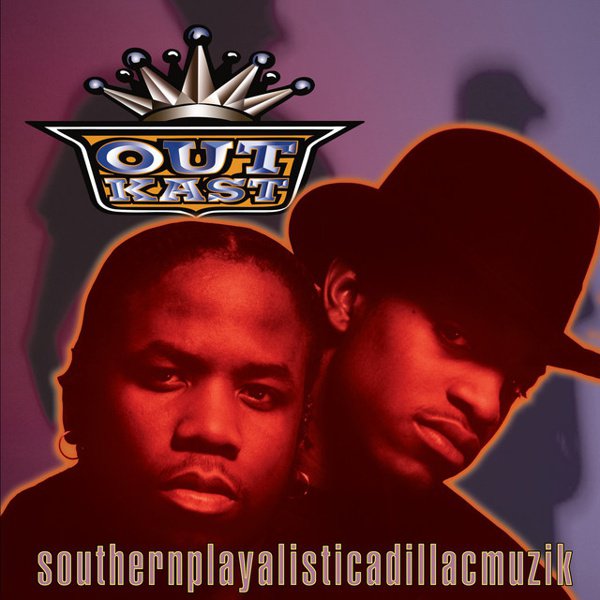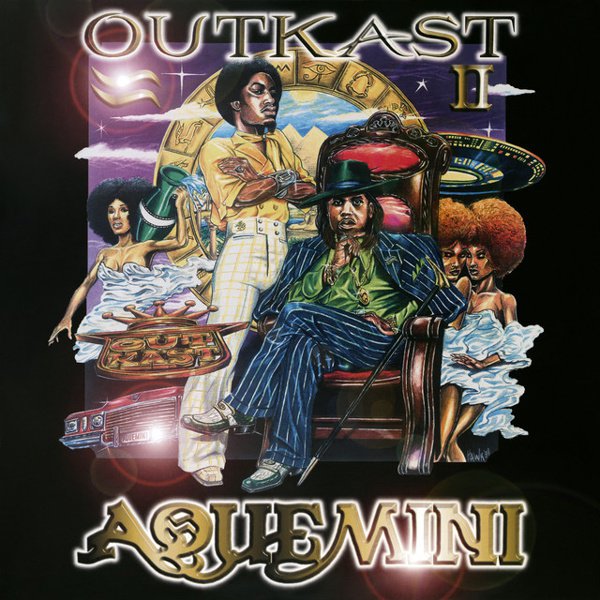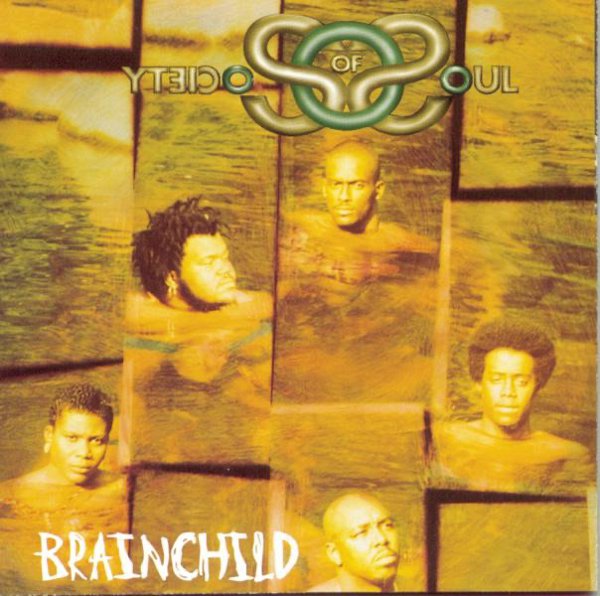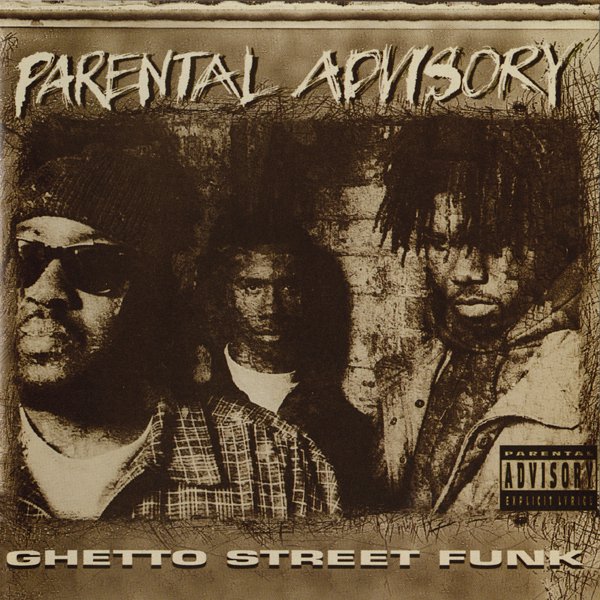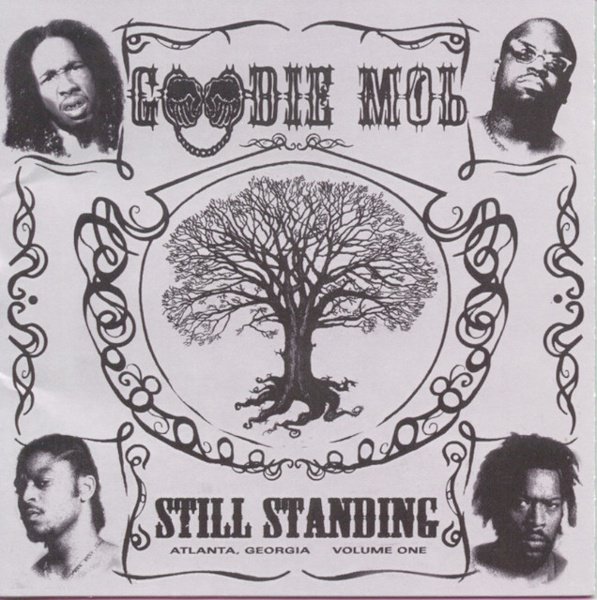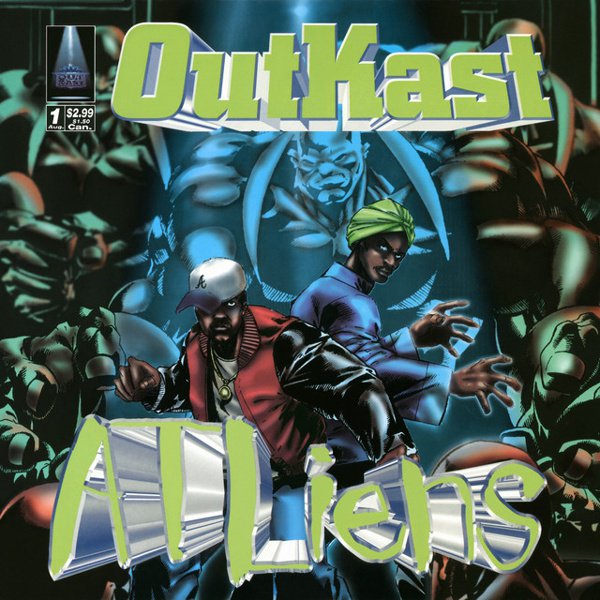Southern hip-hop had countless architects, numerous hitmakers, and more than a handful of genuinely transcendent artists to usher it from regional-scene niche into the mainstream rap conversation over the course of the ’90s. But nobody really did it quite like Organized Noize: as a production unit that centered live-band session-player tradition but still valued rap and R&B’s creative futurism, they got as far as they did because they were also a crew that operated like a tight-knit and distinctly Southern family. Where their regional and chronological cohort’s concerned, only Timbaland and the Neptunes really gave the same amount of genre-agnostic freedom to the artists they produced and wrote for. And while those Virginians were giddy experimenters with little use for a rearview mirror, Organized Noize and their Dungeon Family unit never let you forget they were rooted in a vision of the South that had to reckon with its generations-old musical heritage as much as it had to envision a way to transcend it.
That they did this while downplaying one of hip-hop’s more important young traditions is worth pointing out: while they might have integrated sampling into their sound, they made it sound like a means instead of an end, more elusively evocative than clearly referential. (Of course, they were by no means above a good clear reference every so often — for instance, the interpolation of “Strawberry Letter #23” in OutKast’s “Ms. Jackson” being the best thing to happen to Shuggie Otis’s song since the Brothers Johnson.) Organized Noize made beats, sure, and they had deep crates — their work on OutKast’s first album drew from artists ranging from Isaac Hayes to Black Sabbath to Soft Machine — but they turned the forms of loops and breaks into a sort of seamless, near-invisible component, subsumed and streamlined into a style that felt completely organic compared to the lo-fi loops of, say, RZA, or the Bomb Squad’s highlight-the-edits explosiveness. Considering contemporaries The Roots and, to a lesser but still palpable extent, Dr. Dre, that approach seems inevitable; you could even slot their sound as a midpoint between the live sound-and-feel of early ’90s Chronic funk and the Soulquarian groundswell later in the decade. But in itself, that sound of theirs really sprawls: even if you pinpoint it as an updated soul tradition, their ability to evoke the plaintive ache of an Allen Toussaint ballad one moment and the galactically profound absurdity of George Clinton’s high-concept party funk the next is impressive in itself, even before you factor in their role in defining an entire swath of the ’90s.
Sleepy Brown, Rico Wade, and Ray Murray were the collective minds behind the initial emergence of Organized Noize, and despite the potential for the usual interpersonal tumult and “artistic differences” restlessness, still operated in a way that relied on mutual motivation and never intended to elevate any individual above the group. (Brown’s status as a self-taught second-gen musician is at least worth spotlighting; imagine growing up with the frontman of Atlanta’s own Brick as your dad, and then hearing that band’s big hit “Dazz” become Ice Cube’s backdrop to burn all his N.W.A bridges on “No Vaseline” as you’re trying to break into the business circa ’91.) Brown bonded with Wade at an MC Hammer concert, and by the time Murray joined the crew there was already an artistic core beginning to form — specifically the emerging rap groups OutKast and Goodie Mob — that they would eventually call Dungeon Family, after the dank, dirt-floored, crawlspace-sized Wade family basement room where Organized Noize first started making beats. Their initial route to stardom ran through TLC, whose member T-Boz had introduced Brown and Wade to each other in the first place. She put in the good word that got them on board with Kenneth “Babyface” Edmonds and Antonio “L.A.” Reid’s LaFace Records, and after Reid donated ten grand worth of equipment for the Dungeon, Organized Noize notched an early but crucial gig remixing TLC’s 1992 hit “What About Your Friends” (and introducing OutKast to the world in the process). Working with Reid allowed them a certain creative freedom, but his budgetary limitations meant their sample-clearance budget was next to nothing — and so he demanded that this young production unit rely on their own chops as much as possible. And despite their hip-hop-scholar reverence for what was going down in Los Angeles and New York at the time, Organized Noize set about building their own vision of an Atlanta sound as though they had chips on their shoulders and a relentless need to show everyone else just what their city was capable of. So they’d start with the party-music basis of their city’s musical heart — where Freaknik was Mecca and hits were broken in strip clubs — and build a secular church for introspective sinners on top of that foundation.
If that meant using the R&B-steeped Reid’s comparative lack of savvy over street-status hip-hop to win him over with an OutKast Christmas song, no worries: that song turned out to be “Player’s Ball,” which skyrocketed from a novelty holiday compilation track to a highlight on their debut Southernplayalisticadillacmuzik that made #1 on Billboard’s Hot Rap Tracks. It didn’t need a Diddy-directed video or an R&B mogul co-sign to become a hit, but every musician involved did their damnedest to justify earning those benefits, and its note-perfect fusion of updated classic funk and lyrically-focused, almost idiosyncratically regional rap would be Organized Noize’s strongest calling card for the rest of the ’90s. One way to get where they were coming from is to realize that Brown has expressed surprise at being left out of the conversation around “neo-soul,” and that makes a lot of sense; as one of several parties involved in blurring the lines between hip-hop and R&B production back then, you could easily imagine D’Angelo or Maxwell or Erykah Badu inhabiting the same beats that OutKast and Goodie Mob did. Then again, with their biggest crossover with the R&B world turning out to be the rep-making ’95 TLC smash “Waterfalls,” the doors that opened for them could lead damn near anywhere.
The catch was that eventually they’d wind up trading their financially-skinflint yet creatively autonomous tenure at LaFace for a big-dollar 1996 deal with Interscope that put corporate stress on their ambitions (and their psyches). They wanted more “Waterfalls,” and what they got instead were albums by unproven Dungeon Family artists like Witchdoctor and Cool Breeze and their own Brown-fronted neo-funk project Sleepy’s Theme — artists with more deep-scene cred than mainstream crossover appeal, who worked better as ambassadors for the Atlanta rap scene’s less compromising side and got some of Organized Noize’s strangest stretched-to-the-brink creative experimentations. After a mid-decade post-“Waterfalls” peak that went from one album-length show of strength (Goodie Mob’s Soul Food) to the next (OutKast’s ATLiens), and with a handful of choice R&B singles and deep cuts to go with it (En Vogue’s “Don’t Let Go (Love)”; Andrea Martin & Queen Latifah’s “Set It Off”; Xscape’s “Keep It On the Real”), the Interscope fiasco led to another case of money and expectations leading to drugs and discord — one that a return to LaFace couldn’t entirely repair. But for every subsequent disappointments like Goodie Mob’s commercial-compromise World Party, Organized Noize still had enough juice at the cusp of the new millennium to give OutKast some of their last great collabs for Stankonia (“So Fresh, So Clean”; “Spaghetti Junction”), even as they recognized that the sound they’d given to OutKast was now being outdone by OutKast themselves. (That said, the fact that they were left out of the Speakerboxxx/The Love Below entirely still remains a bit of a sore spot.)
It seems a bit like Organized Noize’s prominence has faded — not fully, but enough that they’re more likely to appear as occasional welcome-presence credits on production-by-committee affairs for Atlanta’s finest (an “I Like That” here, a “Kill Jill” there) than the album-length partnerships which showed them at their brightest-burning best. And even now, their greatness still seems like an open secret — enough to earn a career-spanning Netflix documentary, say (The Art of Organized Noize, 2016), but not enough to keep that documentary from vanishing off the streaming site entirely. Still, being a legacy artist is nothing to scoff at — especially when your legacy includes not only some of the greatest hip-hop to ever emerge from a tight-knit artistic family, but the ripple effects it caused throughout the next generation or two of hip-hop. (Turns out the future of the sound Organized Noize pioneered was, well, Future.) These albums aren’t the entirety of their greatness, but greatness isn’t hard to find here.

